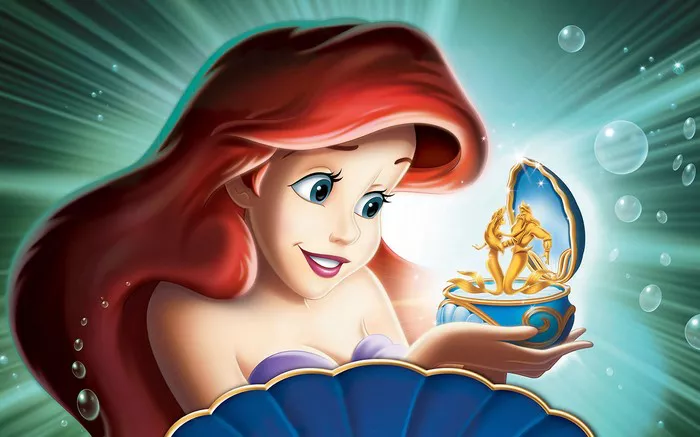In the realm of classic fairy tales, few stories have captured the imagination as profoundly as “The Little Mermaid.” While Disney’s animated adaptation is widely known and adored, the roots of this beloved tale trace back to the 19th-century Danish storyteller Hans Christian Andersen. This exploration delves into the enchanting pages of the original narrative, unveiling the intricate nuances and enduring themes that define The Original Story of The Little Mermaid.
I. Hans Christian Andersen: Architect of Fairy Tales
1. Andersen’s Literary Legacy: From Quills to Disney Magic
Hans Christian Andersen, born in 1805 in Odense, Denmark, emerged as a prolific writer and poet. His timeless fairy tales, including “The Little Mermaid,” have transcended generations and cultures, leaving an indelible mark on the world of literature. Andersen’s storytelling prowess, characterized by a unique blend of whimsy and poignant reflection, distinguishes him as a master craftsman of fairy tales.
2. The Little Mermaid’s Genesis: A Tale of Sacrifice and Longing
Andersen’s original story of “The Little Mermaid” first saw the light of day in 1837. Rooted in the rich tradition of Danish folklore, the narrative weaves a poignant tapestry of sacrifice, unrequited love, and the profound desires that stir the heart of its mermaid protagonist. The tale resonates with a depth that surpasses the boundaries of a mere children’s story, delving into the complexities of the human experience.
II. The Little Mermaid’s Quest for an Immortal Soul
1. Andersen’s Exploration of Existential Themes
Andersen’s narrative introduces readers to the mermaid princess longing for a human soul—an element absent in the underwater realm. The desire for an immortal soul becomes a driving force, symbolizing existential themes of identity, transcendence, and the search for deeper meaning. This thematic richness elevates “The Little Mermaid” beyond a simple love story, positioning it as a profound exploration of the human condition.
2. The Deal with the Sea Witch: A Faustian Bargain
To attain her heart’s desire, the Little Mermaid makes a Faustian bargain with the sea witch. In exchange for a pair of human legs, she surrenders her voice—a crucial element of her identity. This transformative exchange sets the stage for a narrative that unfolds with both magical allure and moral complexity, showcasing Andersen’s ability to intertwine fantasy with profound philosophical reflection.
III. Unrequited Love and Tragic Endings
1. The Prince and the Unseen Heartache
Andersen’s tale introduces a prince as the object of the Little Mermaid’s affection. Yet, the prince remains oblivious to the sacrifices made on his behalf. This unrequited love becomes a central theme, exploring the complexities of emotions that extend beyond the conventional “happily ever after” trope. Andersen’s portrayal of love encompasses both the euphoria of admiration and the ache of silent yearning.
2. The Mermaid’s Bittersweet Fate: Dissolving into Sea Foam
The original tale takes a tragic turn, departing from the optimism characteristic of many fairy tales. The Little Mermaid’s selflessness and sacrifices do not culminate in a traditional happy ending. Instead, she dissolves into sea foam, her ephemeral existence gaining a spiritual dimension. This bittersweet resolution adds layers of nuance to the narrative, challenging conventional expectations of fairy tales.
IV. Adaptations and Interpretations: From Page to Screen
1. Disney’s Animated Magic: A Splash of Optimism
Disney’s animated adaptation of “The Little Mermaid,” released in 1989, brought Andersen’s tale to a new generation. While Disney retained the core elements of sacrifice and love, it infused the narrative with its trademark optimism. The animated musical not only showcased the transformative power of love but also provided a more palatable conclusion for a family audience.
2. Reimagining in Popular Culture: Resonance Across Mediums
Andersen’s tale has seen various adaptations across literature, theater, and film. Each interpretation brings its unique perspective, often reimagining the narrative to suit contemporary sensibilities. From literary retellings to theatrical productions, “The Little Mermaid” continues to evolve, resonating with audiences through different artistic mediums.
Conclusion: The Timeless Allure of Andersen’s Mermaid
In conclusion, the exploration of The Original Story of The Little Mermaid invites us into the enchanting world crafted by Hans Christian Andersen. Through his pen, the mermaid transcends the animated screen, emerging as a complex and enduring figure whose tale delves into the profound realms of desire, sacrifice, and the quest for an immortal soul.
Andersen’s “The Little Mermaid” stands as a testament to the enduring power of fairy tales to transcend time and culture. Its themes of unrequited love, existential longing, and bittersweet resolutions continue to captivate readers, reminding us that even in the realm of fantasy, the human experience unfolds with multifaceted depth. As we revisit the pages of Andersen’s timeless tale, we embark on a literary voyage that transcends generations, proving that the allure of the mermaid’s song resonates eternally in the hearts of those who dare to delve into the depths of storytelling magic.

